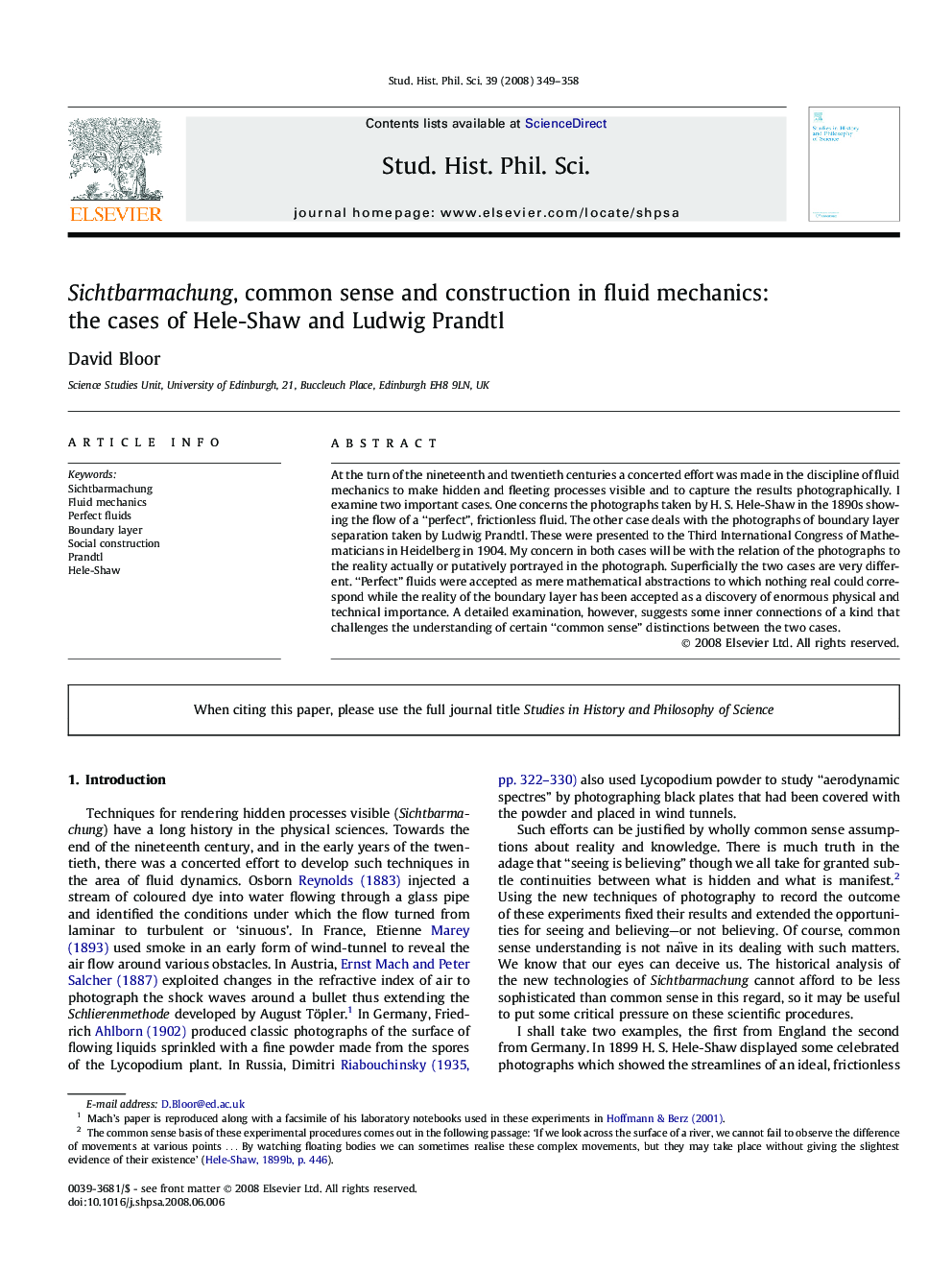| Article ID | Journal | Published Year | Pages | File Type |
|---|---|---|---|---|
| 1160436 | Studies in History and Philosophy of Science Part A | 2008 | 10 Pages |
At the turn of the nineteenth and twentieth centuries a concerted effort was made in the discipline of fluid mechanics to make hidden and fleeting processes visible and to capture the results photographically. I examine two important cases. One concerns the photographs taken by H. S. Hele-Shaw in the 1890s showing the flow of a “perfect”, frictionless fluid. The other case deals with the photographs of boundary layer separation taken by Ludwig Prandtl. These were presented to the Third International Congress of Mathematicians in Heidelberg in 1904. My concern in both cases will be with the relation of the photographs to the reality actually or putatively portrayed in the photograph. Superficially the two cases are very different. “Perfect” fluids were accepted as mere mathematical abstractions to which nothing real could correspond while the reality of the boundary layer has been accepted as a discovery of enormous physical and technical importance. A detailed examination, however, suggests some inner connections of a kind that challenges the understanding of certain “common sense” distinctions between the two cases.
